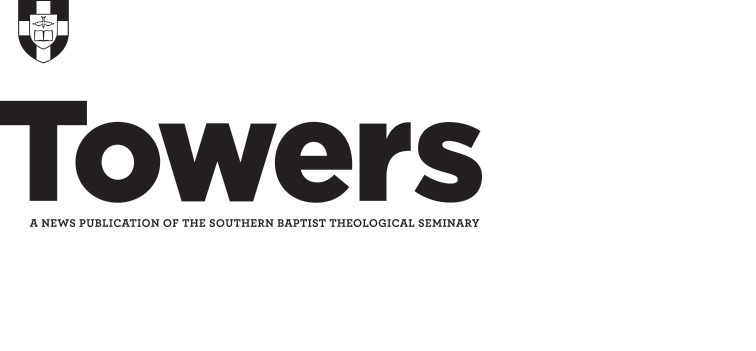The study of Arabic at Southern Seminary goes back much further than its recent renewal in the 2014-2015 academic session. “At SBTS, we have realized the significance of studying Arabic and Islam as early as 1877,” said Ayman Ibrahim, Southern Seminary professor of Islamic Studies and Arabic, emphasizing the importance of this study for Southern’s past and future impact on the nations. “Our rich heritage drives our strong conviction today: We want to communicate the gospel with Arabic speakers, particularly Muslims, using their own language.”
The 1868-1869 academic catalog notes that a new professor, Crawford H. Toy, was elected to be professor of interpretation of the Old Testament and Oriental Languages. Starting with the 1869-1870 session, it is recorded that “Instruction in other Shemitic [sic] languages is given to those who desire it.” In 1877-1878, however, the institution began to offer “Collateral and Post-graduate Studies,” which included courses in Arabic, Syriac, Ethiopic, “and other languages cognate to Hebrew, and Sanskrit, which is so important to a thorough knowledge of Greek and of English.” At this point in SBTS history, students had the opportunity to be instructed in a multitude of ancient Semitic languages, though this was reversed in the succeeding decades.
Within two years the availability of courses changed as Toy resigned on account of his heterodox views of biblical inspiration. While the course listing for the senior Hebrew class retained that “Instruction in other Shemitic [sic] languages is given to those who desire it” in the 1879-1880 catalog, the “Collateral and Post-graduate Studies” section omitted Arabic and Ethiopic.
For 10 years a course in Arabic was not offered. The 1889-1890 catalog included a description for an Arabic class comprised of three students. The instructor was not named until the 1893-1894 catalog, in which the description of the course changed significantly (shown in bold):
Arabic. – Lansing’s Arabic Manual is used as a textbook. Special work on the Life of Mahomet, the Composition of the Koran and the History of Islam is done by different members of the class. Special attention is given to the relations between Hebrew and Arabic. About thirty-five suras of the Koran have been studied critically during the present session. Lexicons are furnished from the Library. – Prof. Sampey.
In his memoirs, President John R. Sampey recorded a summer study in 1893 under W.R. Harper at Episcopal Theological Seminary in Philadelphia. The study included reading suras from the Koran. Sampey commented on teaching the following academic term that “One of the best ways to make progress in any field is to teach it.” It is clear from Sampey’s life, his notebook, and course descriptions that the instruction of Arabic was not purely academic, but also evangelistic.
The aforementioned textbook, Lansing’s An Arabic Manual (1886), was donated together with the Arabic New Testament and a lexicon by Southern Seminary professor Basil Manly Jr. The Koran and another lexicon were donated by Southern Seminary founder James P. Boyce. Other very interesting resources Sampey’s classes used are housed in the SBTS Archives and Special Collections.
Until the 1948-1949 academic year a course in Arabic remained in the catalogs. After this it was only studied under John J. Owens, a professor of Old Testament, as part of a seminar in Old Testament Language, focusing on comparative languages, offered from the 1956-1957 session until the closing of the 1969-1970 academic terms, then Arabic was not offered at all for 44 years.
The seminary community should celebrate Southern’s recent renewal of the study of Arabic as both academics and as disciples of Christ, so that we may share the gospel with Arabic speakers — and Muslims in general — without forgetting the rich heritage we share with earlier alumni.
More information on the Arabic materials housed in the Boyce Centennial Library is available in the Archives & Special Collections office on the second floor.
¹Aramaic has always been instructed at SBTS, but at times Assyrian, Chaldean, Coptic and Syriac were taught in addition to Arabic.
²John R. Sampey, Persons and Institutions I have Loved, Volume 1, 85, 88.
³“Arabic lessons copied by John R. Sampey from Arabic Studies by William R. and Robert F. Harper [and other notes],” Archives and Special Collections, James P. Boyce Centennial Library, SBTS.
4Sampey, Persons and Institutions, Volume 1, 41. In reference to the notebook, the vocabulary words chosen in conjunction with the translation exercises of Scripture definitely seem to indicate that the course was sensitive to evangelism. Later course descriptions reveal students




